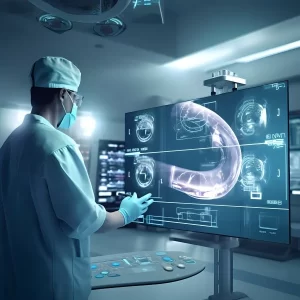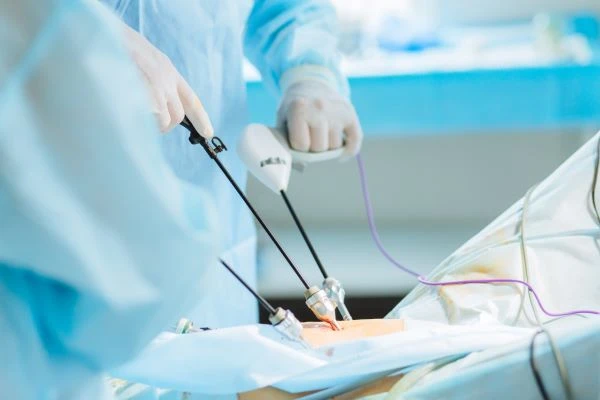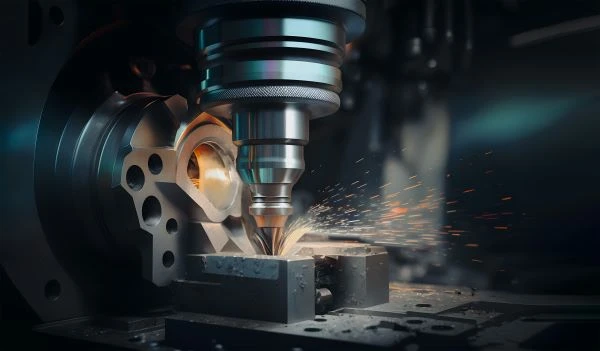
In the intricate realm where science, technology, and healthcare converge, a silent revolution is underway. Precision engineering, with its artful fusion of meticulous design, cutting-edge technology, and unwavering accuracy, is emerging as the driving force behind a new era of medical innovation. From the delicate instruments that enable life-saving surgeries to the advanced imaging systems that reveal the innermost secrets of the human body, precision engineering’s impact on the medical field is nothing short of transformative. In this exploration, we delve into the remarkable ways in which precision engineering is crafting a future where medical innovation knows no bounds, redefining possibilities and reimagining the very essence of healthcare as we know it.
Advanced Medical Imaging
Precision engineering stands as the cornerstone of a remarkable transformation in medical imaging, reshaping the capabilities of Magnetic Resonance Imaging (MRI), Computed Tomography (CT) scans, and ultrasound. These technologies, infused with precision-engineered components, have redefined the realm of diagnostics, amplifying image quality, fostering patient safety, and fostering precise diagnoses.
Cutting-edge MRI machines and CT scanners owe their exceptional image resolution to the meticulous design of precision-engineered magnets and detector arrays. These components function in harmonious precision, capturing the minutest details of anatomical structures. Remarkably, precision engineering has even responded to the pressing need for radiation reduction in CT scans. The result is the synthesis of low-dose imaging protocols with iterative reconstruction, safeguarding patients from excessive radiation without compromising diagnostic accuracy.
In the heart of ultrasound, precision-engineered advancements empower real-time imaging of internal dynamics. Compact yet sophisticated transducers, coupled with intricate signal processing, culminate in images that unravel complexities within the body. This intricate precision cascades into accurate diagnoses and targeted interventions, ensuring every image is a window into the patient’s well-being.
Minimally Invasive Surgery
The realm of minimally invasive procedures has undergone a significant transformation with the integration of precision-engineered surgical instruments and robotic systems. These technological advancements have led to a more refined approach to surgical interventions, offering tangible benefits that enhance patient outcomes.
 Precision-engineered surgical instruments have enabled surgeons to navigate delicate anatomical structures through smaller incisions. This minimises patient trauma and discomfort, as well as reduces the risk of infection. With these finely tuned tools, surgeons can perform intricate procedures with heightened accuracy, ensuring targeted outcomes while preserving surrounding tissues.
Precision-engineered surgical instruments have enabled surgeons to navigate delicate anatomical structures through smaller incisions. This minimises patient trauma and discomfort, as well as reduces the risk of infection. With these finely tuned tools, surgeons can perform intricate procedures with heightened accuracy, ensuring targeted outcomes while preserving surrounding tissues.
Robotic systems have introduced an additional layer of precision to minimally invasive surgeries. These systems work in tandem with surgical teams, offering enhanced control and dexterity. Surgeons can manipulate robotic arms to perform complex movements with steadiness, leading to meticulous procedures. The use of robotics translates into quicker recovery times for patients, allowing them to resume normal activities sooner and experience less post-operative pain.
Implantable Devices and Prosthetics
Precision engineering plays a pivotal role in the development of implantable medical devices, such as pacemakers, artificial joints, and cochlear implants. These devices, meticulously crafted through a mixture of design precision and biocompatible materials, have significantly enhanced patient care, longevity, and overall quality of life.
In the realm of pacemakers, precision engineering ensures that these life-saving devices are intricately calibrated to deliver precise electrical impulses to the heart. The design precision guarantees accurate pacing, maintaining optimal heart rhythm. Biocompatible materials are carefully chosen to ensure the device seamlessly integrates with the body, minimising the risk of rejection and complications.
Artificial joints, another triumph of precision engineering, replicate natural joint mechanics. Meticulous design allows for minimal friction and optimal load distribution, mirroring the body’s movement. Biocompatible materials like titanium and ceramics provide durability and compatibility, promoting the longevity of these implants and enabling patients to regain mobility with reduced discomfort.
Cochlear implants, designed with meticulous precision, restore hearing for individuals with hearing loss. Precision-engineered electrodes are positioned to stimulate auditory nerves with accuracy, translating sound into meaningful signals for the brain. Biocompatible materials promote tissue integration, ensuring long-term implant stability and improved auditory perception.
Drug Delivery Systems
In the design and production of advanced drug delivery systems, the application of precision engineering techniques heralds a new era of targeted therapies and personalised medication regimens. These techniques, underpinned by meticulous planning and innovative materials, have a profound impact on both treatment efficacy and patient experiences.
Micro-needles, a testament to precision engineering, enable painless and efficient drug administration. By crafting ultra-fine needles with exacting precision, drug delivery becomes minimally invasive yet highly effective. Similarly, nanoparticle-based therapies benefit from precision engineering’s ability to manipulate particle size and composition. This enables precise drug targeting, minimising side effects and amplifying therapeutic benefits.
The pinnacle of precision lies in personalised medication regimes. Through precise dosing and tailored delivery mechanisms, patients receive treatments uniquely suited to their needs. Precision-engineered devices ensure accurate drug release, empowering patients to manage their conditions with greater control and convenience.
Sensors and Diagnostics
Precision-engineered sensors and diagnostic tools play a pivotal role in real-time monitoring of vital signs, biomarker detection, and comprehensive patient health assessment. This integration of precision technology, devoid of exaggeration, has revolutionised healthcare by enabling more accurate and timely interventions.
Vital sign monitoring, facilitated by these sensors, provides clinicians with instantaneous insights into a patient’s heart rate, blood pressure, temperature, and more. The precision-engineered nature of these devices ensures reliable and continuous data collection, facilitating early detection of anomalies and swift medical responses.
 Detection of biomarkers, essential indicators of various health conditions, is elevated by precision-engineered diagnostic tools. These tools precisely analyse biological samples for specific biomolecular markers, aiding in the early diagnosis and management of diseases ranging from diabetes to cancer.
Detection of biomarkers, essential indicators of various health conditions, is elevated by precision-engineered diagnostic tools. These tools precisely analyse biological samples for specific biomolecular markers, aiding in the early diagnosis and management of diseases ranging from diabetes to cancer.
Real-time patient health assessment is amplified through advancements in wearable medical devices. These non-invasive, precision-engineered wearables discreetly track physiological parameters, empowering patients to actively participate in their well-being. Furthermore, point-of-care testing, made possible by precision diagnostic tools, accelerates diagnostic processes, allowing rapid and accurate on-site assessments.
In the realm of healthcare, the influence of precision engineering on medical innovation is unmistakable and profound. Through the meticulous integration of technological prowess and medical acumen, precision engineering is shaping the landscape of modern medicine. The mixture of precision engineering with medical science has resulted in a plethora of advancements that touch various aspects of patient care. From the intricacies of surgical procedures to the subtleties of implantable medical devices, precision engineering demonstrates its capacity to enhance both efficacy and patient experiences.
The narrative of precision engineering in medical innovation is one of collaboration and evolution, where scientific precision converges with medical insight to yield solutions that redefine possibilities. As we continue to traverse this path, it is evident that precision engineering will remain a guiding force in crafting a future where medical innovation is both finely tuned and deeply impactful, enriching lives and revolutionising patient care.
This all signifies a commitment to continuous improvement, where innovation thrives on the foundation of accuracy and reliability. As we navigate the complexities of health challenges, precision engineering stands as a beacon of progress, offering the potential to develop novel treatments, refine diagnostic techniques, and ultimately pave the way for a healthier society.





